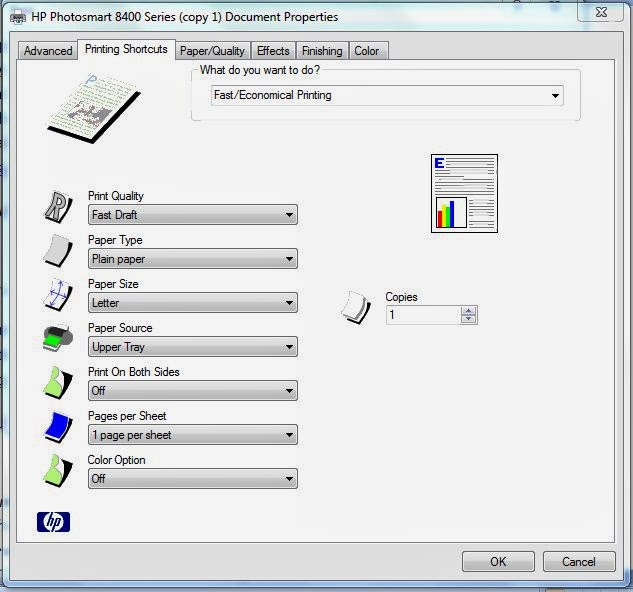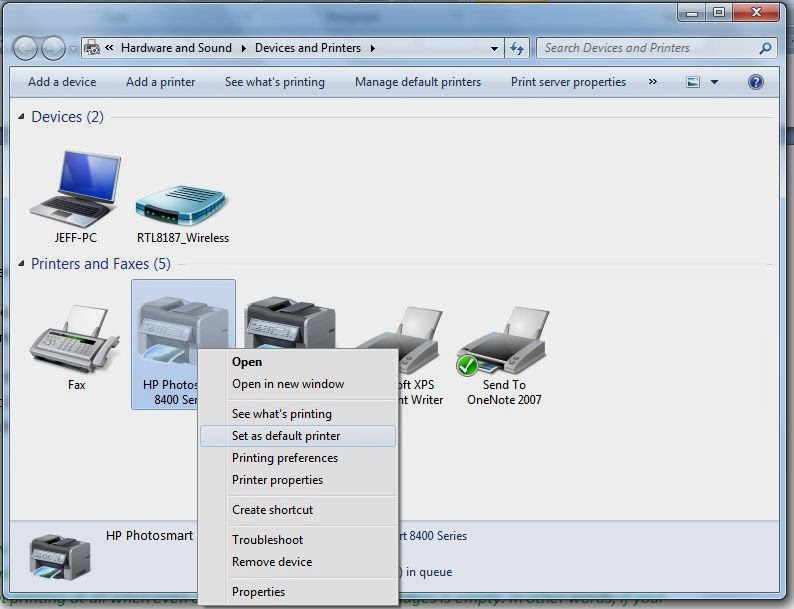Introduction

No.2:Problem: Ink and/or toner costs too much.
Solution:

Printers: Can't live with them, can't nuke them. You could always toss a misbehaving inkjet or laser out the window, but where would that leave you? Truth be told, we need our printers, despite their maddening quirks.
Below are Some Most Common Issues that Users Faces in their routine life.
No.1:Problem: Printing is too slow.
Solution:
Increase printer performance and save ink in the process >> by reducing print quality for everyday output. "While printer settings vary by model," here's how to switch to draft-printing mode in most Windows apps.

Select Print and Properties, and then look for a setting that reduces print quality. With the HP Photo-smart 8450, for instance, change the default print quality setting from Normal to Fast Draft (click screen-shot at right). Other speedup suggestions: Print pages from websites without graphics, and add RAM to your printer, if possible. In this way your Printer's Performance will increase.
Solution:
PC World has written a lot about the printing industry's sneaky practices over the years. To wit: They snare you with dirt-cheap printers sold at or below cost, and then stick it to you later with ultra-pricey consumables.
Based on our tests, we can't recommend third party vendors' re-manufactured or refilled ink cartridges, which may not give you your money's worth. One cost-saving solution is to buy higher-capacity cartridges. If you print a lot, try an ink cartridge with a 250-plus page yield, or a toner cartridge with a 2,000-plus page yield.
Based on our tests, we can't recommend third party vendors' re-manufactured or refilled ink cartridges, which may not give you your money's worth. One cost-saving solution is to buy higher-capacity cartridges. If you print a lot, try an ink cartridge with a 250-plus page yield, or a toner cartridge with a 2,000-plus page yield.
No.3:Problem: Windows is sending print jobs to the wrong printer.
Solution:
For some mysterious reason, Windows may select a new default printer--the one it automatically sends print jobs to. (This happened to me when I upgraded from Vista to Windows 7.)
For some mysterious reason, Windows may select a new default printer--the one it automatically sends print jobs to. (This happened to me when I upgraded from Vista to Windows 7.)

To fix this glitch in Windows 7, click Start (the Windows icon in the lower-left corner of the screen) and select Devices and Printers. Under Printers and Faxes, right-click the printer you want to make the default, and select Set as default printer. If you're using earlier versions of Windows, these steps vary a bit
For Feedback and Suggestions Please Comment::
Tag :
Windows TIPS & TRICKS

